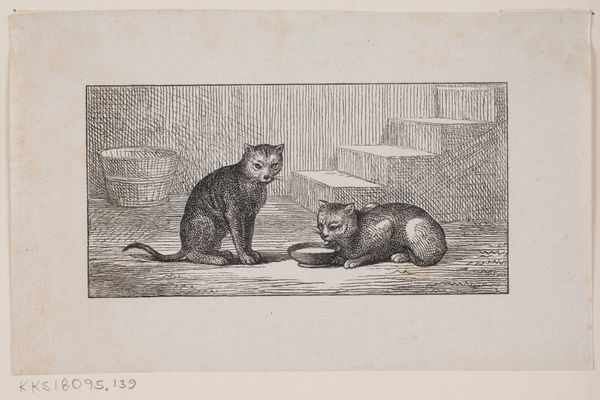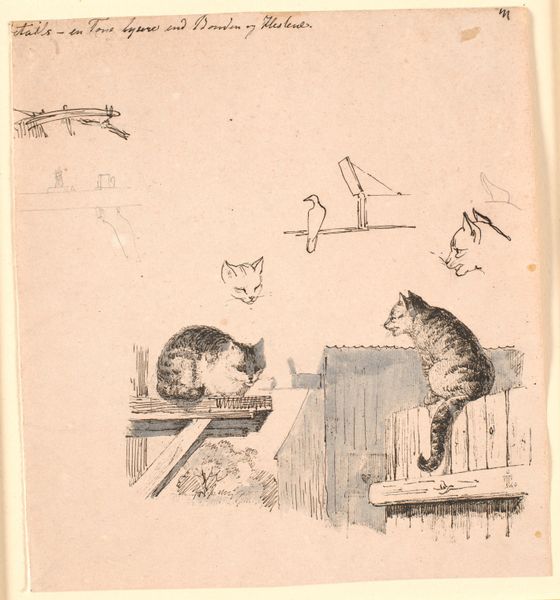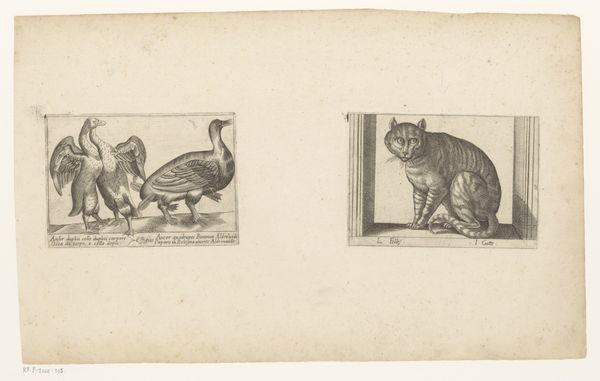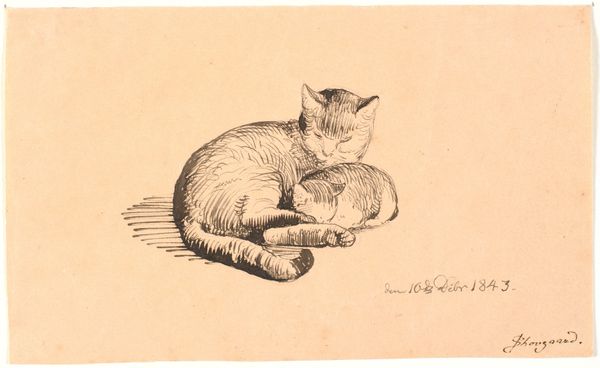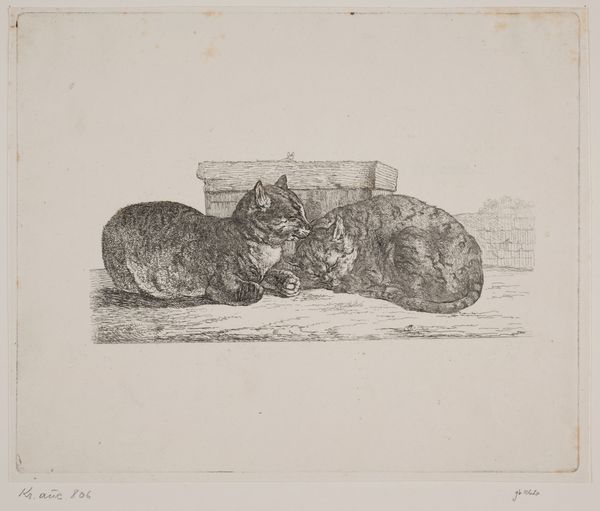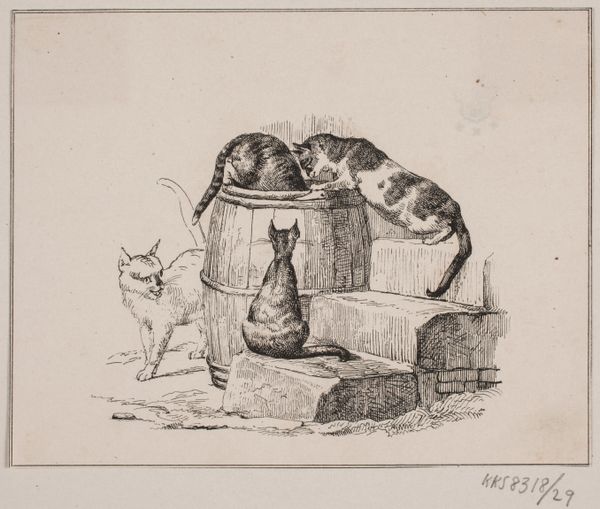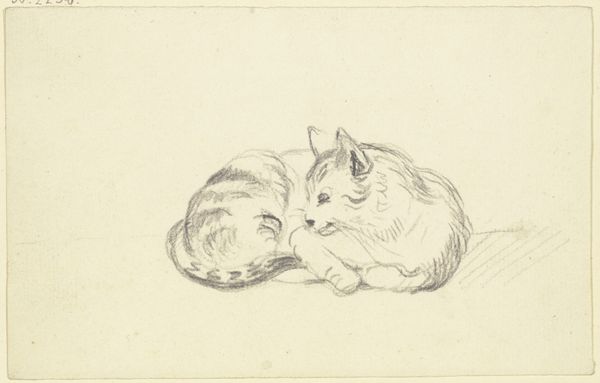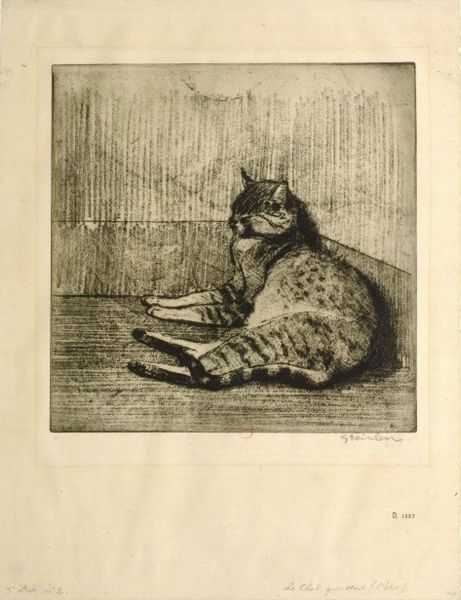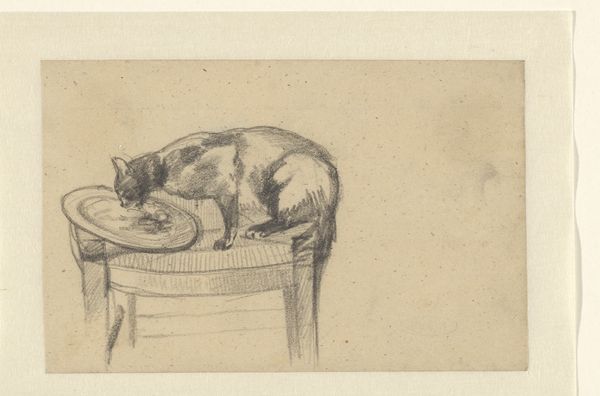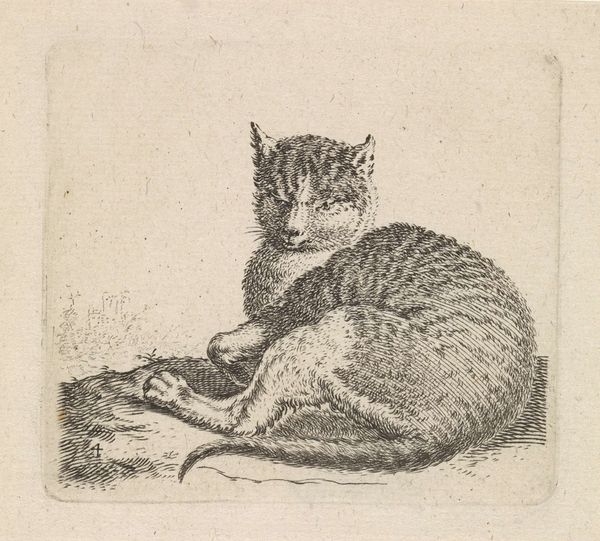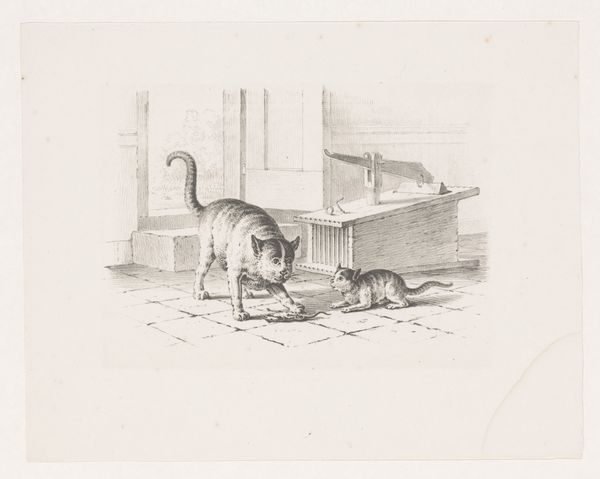
drawing, lithograph, print
#
drawing
#
lithograph
# print
#
landscape
#
figuration
Dimensions: 97 mm (height) x 126 mm (width) (bladmaal)
Adolph Kittendorff created this small print, "De to katte," using etching, a printmaking technique known for its fine lines and detailed imagery. The process begins with a metal plate, usually copper, coated with a waxy, acid-resistant layer. The artist then draws through this layer, exposing the metal. When the plate is immersed in acid, the exposed lines are "bitten" or etched into the surface. The longer the acid bath, the deeper and darker the lines will be. This careful modulation is part of what gives the print its visual interest. The plate is then inked, and the surface wiped clean, leaving ink only in the etched lines. Finally, it's pressed onto paper, transferring the image. Looking closely, you can see how Kittendorff used the varying depths of the etched lines to create areas of shadow and light, giving the cats a sense of volume and texture. This print, like many from its time, offered a way to reproduce images widely, making art more accessible. It challenges any strict divide between fine art and the applied arts.
Comments
No comments
Be the first to comment and join the conversation on the ultimate creative platform.
